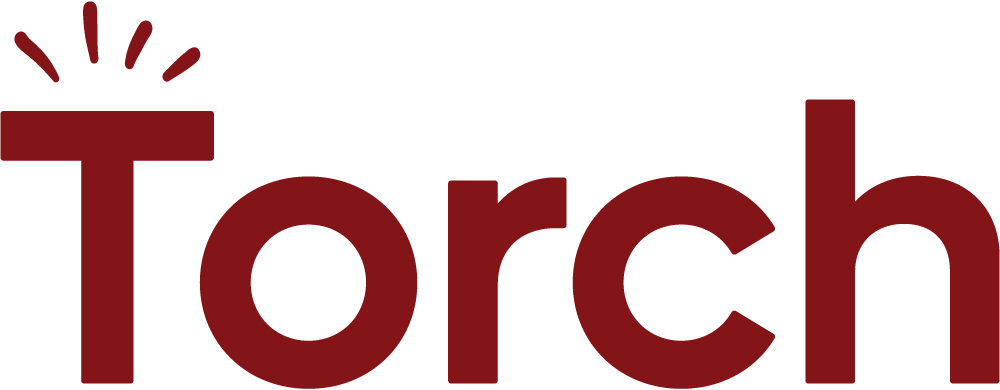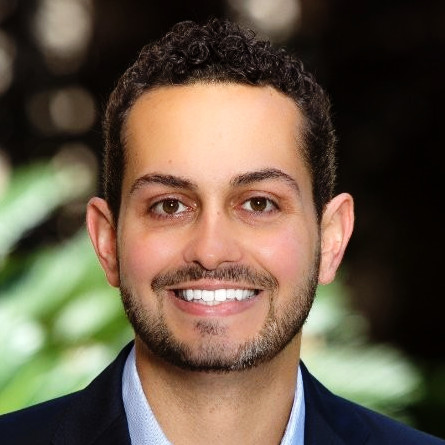Companies are spending on tools, running pilots, hosting training sessions. The technology works. Most organizations are treating AI adoption like an IT project when it’s actually a people transformation.
During a recent webinar hosted by Achieve Engagement, Torch CEO Heather Conklin and Brandon Sammut, Zapier’s Chief People Officer, dug into what happens when you get the people side right.
The companies making AI work aren’t the ones with the biggest budgets or the fanciest tools. They’re the ones who understand that transformation happens through people, not around them.
Watch the full conversation | Scan the highlights below
Stop waiting for permission to lead
Brandon didn’t wait for permission or consensus when Zapier decided to move on AI. Six months after ChatGPT launched, his leadership team published an internal blog post called Code Red and told everyone to start learning.
Was everyone onboard? Not exactly. “It wasn’t universally popular at first. Not everyone saw the opportunity the same way at first. And a lot of folks had very understandable concerns about what it would mean for their jobs,” Brandon said. “But two and a half years later, looking back with the benefit of hindsight, I’m glad that we didn’t wait for anything near consensus.”
Why did the people team lead instead of product or engineering? “Every other type of organizational transformation. Leadership, leadership, leadership, that’s what makes the difference. And cultivating leadership is one of the primary missions of people teams in general.”
Most CHROs already know this. The gap is making it operational when you’re also managing headcount, proving ROI, keeping everything else running. Brandon had a clear answer. Stop speaking HR language.
“When we think about serving our end users and helping them be successful, it’s intuitive to us to translate our know-how, which is usually embedded in some pretty deep subject matter expertise and some jargon. We need to convey the opportunity, not through the lens of our language, but through the language of the people that we’re trying to team with.” — Brandon Sammut, Zapier Chief People Officer
Walk into a leadership meeting talking about engagement scores and you lose the room. Walk in talking about whether leaders can build trust under pressure, help teams pivot without chaos, create conditions for distributed innovation? Now you’re speaking business language.
“The more that I see leaders connecting to what are the business goals that we’re trying to drive with this change, that’s where you can also get a lot more buy-in, rather than just kind of leadership development in sort of like a vacuum or in isolation from the business goals,” Heather said.
Your people team already has the ingredients to lead this. Business leaders own the outcomes. You’re bridging between the two.
Most companies stop at mandate or experimentation
Heather laid out what she’s seeing across companies. Three approaches to AI adoption, and most are stuck in the first two.
- The mandate. CEO announces we’re going AI-first. Top-down clarity and urgency, but no bridge between vision and execution.
- The experimentation. Hackathons, pilots, lunch-and-learns. Good technical activity, but no north star beyond “use AI more.”
- The strategic change. Systematic frameworks plus individual support. Technical skills and human capacity building.
The mandate matters because it provides clarity and urgency. But it only sets the destination. Experimentation gives people tools to translate their expertise into use cases. When Brandon looked at the most powerful ways his own people team uses AI, maybe 20% came from him or his leadership team. The rest came from people doing the actual work.
But experimentation typically stays at the use case level. How might I use AI to do my existing work better? For bigger opportunities you need to rethink role design, org design, incentives, leadership behaviors.
Heather shared what strategic change looked like at LinkedIn. They partnered with Torch to give thousands of people across the organization access to contextual coaching, including working through questions like how AI might fundamentally change what success looks like in their role.
“It was really cool because it was one of the first times that I had seen someone really recognize that this is a really individual journey, and that there isn’t anything one-size-fits-all about it. AI affects every industry, every company, every function, every level, every generation really, really differently.” — Heather Conklin, Torch CEO
That individual support created a feedback loop. LinkedIn learned what was actually happening on the ground that might be standing in the way of success. How they could communicate better, provide clearer strategy, give people something real to rally around.
Strategic change holds all three pieces. Clear mandate, space to experiment, and leadership capacity to move from automation to transformation.
Fix the foundation first
People are drowning. LinkedIn reported an 82% increase in people posting about feeling overwhelmed. Trust in managers dropped from 46% to 29% in two years. Now you’re asking people to adopt AI on top of everything else.
Companies often label this as resistance. Heather pushed back.
“When you really peel that back and look a few layers deeper, it’s often not actually resistance.” — Heather Conklin, Torch CEO
Brandon called transformation “a health check for the org like no other health check.” The ingredients for successful AI transformation are the same ingredients for healthy organizational cultures. Clarity on what’s expected. Knowing what excellence looks like. Psychological safety to experiment. Trust in leadership.
If those foundations are shaky, AI amplifies the problems instead of solving them.
Then clear the lane
Brandon’s answer to overwhelm? Create space. He made his people team inventory every single program, product, and practice. By the end of six months, at least 50% needed to be either automated or retired.
“I want to believe it was not universally understood or loved at that time. But when we got specific, when we kept beating the drum, and when I started sitting down with specific groups and really explaining why this was important, why we needed to do it now, folks got kind of interested.”
It worked. They created space and their pace of innovation increased. They saved time for his team and for employees across the organization.
Brandon anchored this in something the team already valued. “We had been working for years to really anchor the team on impact, not activity.” Zapier also leaned into their Build the Robot value. Don’t let humans do things robots can do better. Make space for what humans do best.
Heather kept pushing on why this matters. “We need people who can step back and actually look at what is there and what is on their plate today, and start to let go of some of the old things so that they can embrace this new way of working. But that is not easy to people.”
“We really believe that if we don’t help people develop that deeper capacity to more strategically approach this change, then you’re only going to get a fraction of the productivity or value from AI that you would see if you invest in those kinds of things.” — Heather Conklin, Torch CEO
Before you roll out AI training, check the foundation. Then clear the lane.
Let small groups show the way
Brandon walked through what happened when Lauren, Zapier’s customer support leader, saw a big opportunity to use AI to change how the team worked. But she couldn’t call 100 people into experimenting everywhere all at once.
So she carved out two small pods of three or four people each, people who knew their craft. She changed their jobs for six months and gave them time to experiment, anchored to the team’s mission of fast, accurate support.
What Lauren was really doing? Reimagining the work from scratch instead of just automating what already existed.
Six months later, they had proof of concepts showing more efficiency, higher quality output, and better employee experiences. Then Lauren did something smart. Instead of standing up alone and telling the team they needed to work differently, she gave the experimenters the microphone.
“Nothing helps like showing versus telling.” — Brandon Sammut, Zapier Chief People Officer
They showed what they tried, what worked, what didn’t, what they believe is now possible. With measurable results. Then Lauren set a clock. We’re now going to invest in the transformation of our team into these new ways of working.
The result? The support team is unusually productive, paid top 10% for customer support roles, doing work that’s more engaging because there’s less tedium.
Heather saw the power in Lauren not waiting for permission. “I love how she took something that often people are kind of waiting for that top-down mandate, or the push, or maybe the enablement on these things, and she really saw it from the ground up.”
This is what Heather kept coming back to throughout the conversation. If teams only think about making existing work faster or easier, you miss the bigger picture.
“In my work in product I’ve spent years talking about first principles thinking. In leadership development we often say what got you here won’t get you there. I’m realizing how critical these concepts are in the AI world. We need to help people get comfortable instead asking what would we build if we started from scratch today?” — Heather Conklin, Torch CEO
Making that shift requires developing new leadership capacities. The ability to step back and see the whole system, let go of what worked before, embrace what’s possible. You don’t build those capacities in a workshop.
What to try with your team this week
Heather and Brandon shared practical moves you can make right now. Here’s what stood out:
- Map your AI approach against the three paths. Just a mandate? Random experimentation? Strategic change connecting vision to execution and individual support? Name where you are honestly so you can see what’s missing and what to build next.
- Run an organizational health check. Before you add AI training, assess the foundation. Do people know what’s expected? Do they know what excellence looks like? Is there psychological safety to experiment? Shore up what’s shaky so you’re not building AI adoption on broken trust.
- Inventory what to automate or retire. Take one team and list every program, practice, meeting, process. Ask if it’s still driving impact or just creating activity. Aim for 30-50% reduction to clear bandwidth for work that actually matters.
- Carve out a small experimentation pod. Pick 3-4 people who know their work deeply. Change their job for 8-12 weeks to focus on reimagining their work from scratch, not just automating what exists. This shows the rest of the team what change looks like in practice.
- Translate into business language. Stop talking about engagement and learning journeys. Start talking about whether leaders can build trust under pressure and create conditions for distributed innovation. This gets you a seat where strategy actually happens.
What the audience asked
What’s getting in the way of AI readiness?
During the conversation, the audience was polled on what’s blocking readiness in their organizations. 30% said people are overwhelmed and don’t have bandwidth. “For as much progress as Zapier may have made on this topic, bandwidth is the number one thing we hear too, because it’s hard,” Brandon said. Clear the lane first, then build.
Why does experimentation fail without the right conditions?
“A lot of companies are not set up for a risk-taking kind of culture, and experimentation does require a level of taking a risk and showing where things have failed, or where you don’t know what you’re doing,” Heather said. “And then the other piece is just the coordination. You can have a lot of random experimentation, but how are you actually honing the learnings from that?”
How do you help people move from automation to reimagining their work?
Heather framed this as the first principles problem. If teams only think of AI as making existing work faster, you miss the bigger picture. Brandon’s answer was about creating space. “We’re not slashing stuff for the sake of cutting stuff out, but let’s apply an impact lens. And then let’s also figure out, don’t let the humans do the things that robots can do or do better.” That shift doesn’t happen in a workshop.
The bottom line
Both speakers came at this from different angles and kept landing on the same thing. The technology works. What’s not working is how companies are approaching the people side.
“AI transformation equals people transformation.” — Brandon Sammut, Zapier Chief People Officer
Brandon proved you can do this at depth. Heather sees the pattern across hundreds of companies. The ones getting AI transformation right aren’t the ones with bigger budgets. They’re the ones who understood early that this is a leadership problem.
The gap between companies who treat this like a tech project and companies who lead with people is widening every quarter. You can keep watching pilots fail, or you can invest in the leadership capacities that make change possible.
AI isn’t waiting for anyone. And the gap between adoption and impact comes down to leadership. Watch the full conversation then let’s talk about closing it.
Speaker spotlights
Build confident leaders for the AI era
Torch AI Readiness Coaching helps leaders translate AI ambition into action, creating the clarity and confidence needed to drive real change.



